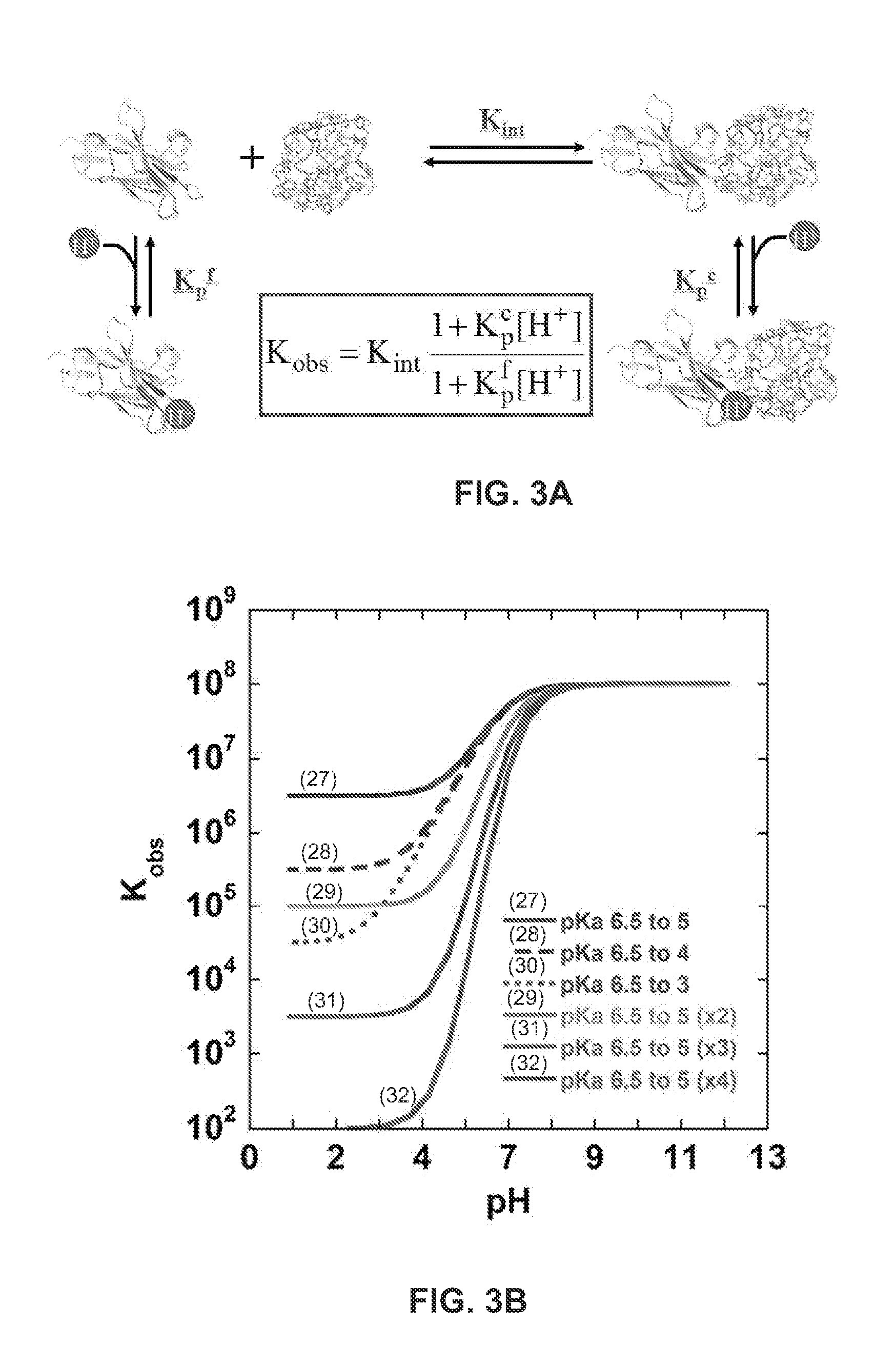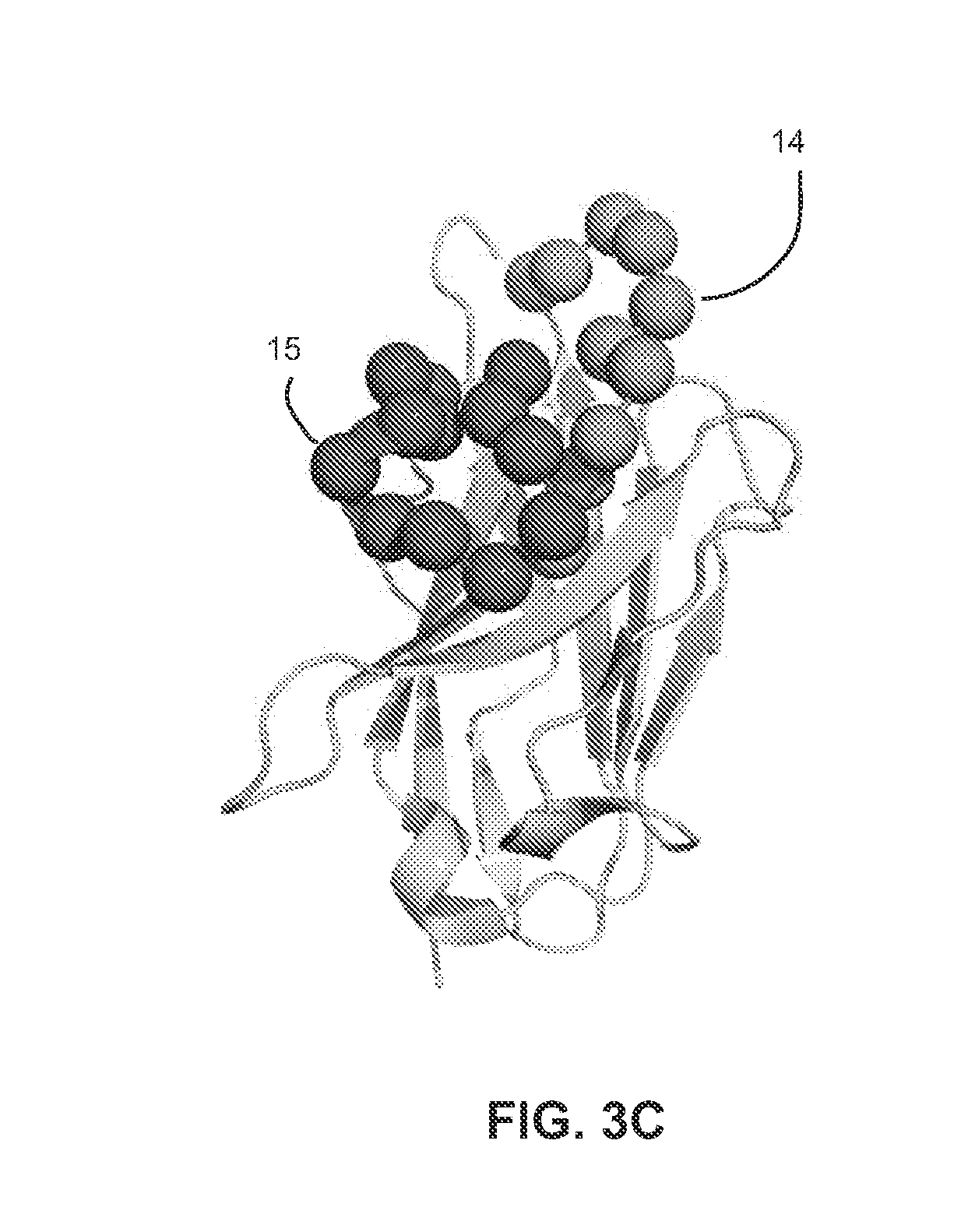Library-based methods and compositions for introducing molecular switch functionality into protein affinity reagents
a technology of protein affinity reagents and library-based methods, applied in the direction of nucleotide libraries, instruments, library screening, etc., can solve the problems of modest conventional methods so far
- Summary
- Abstract
- Description
- Claims
- Application Information
AI Technical Summary
Benefits of technology
Problems solved by technology
Method used
Image
Examples
example 1
Design and Engineering of pH Dependent Molecular Switch Functionality into an Antibody
[0121]There is growing interest in the development of protein switches; one such example is pH dependent protein-protein interactions. A novel, synthetic, combinatorial library was developed to sample histidines throughout a model single domain antibody interface. This approach is both rapid and robust, and is capable of producing numerous highly pH-sensitive antibody variants that would otherwise, not likely be generated using traditional design methods.
[0122]Chemical Basis for pH-Dependent Binding
[0123]Mechanistically, the engineering of pH sensitive binding requires that the inserted residue (e.g., histidine) or functional group undergo a change in pKa on binding (FIG. 3A). This change in pKa value stems from the ionizable group's sensitivity to a change in microenvironments (e.g., those present in bound and unbound states or folded and unfolded states). For example, protein stability studies by...
example 2
Design and Engineering of Metal Dependent Molecular Switch Functionality into an Antibody
[0175]Biology employs a number of strategies to regulate protein binding events, but the underlying principle behind most regulation is simply coupled equilibria. A minimalist example of such linked equilibria-based regulation involves a single (common) protein interface that is capable of recognizing more than one target. Such promiscuous protein binding can serve to enhance or preclude secondary binding events and frequently plays a role in regulating signaling pathways. In general, the underlying structural properties of such dual-specific protein interfaces are not well understood as the types of interactions that are necessary for each binding event may be significantly different.
[0176]Metal binding proteins are among the most commonly observed dualspecific proteins. Traditional efforts to design novel metal binding sites rely heavily on knowledge of the protein's three-dimensional structur...
example 3
Generation of an Anti-Hapten VHH Antibody and Characterization of its Binding Thermodynamics
[0215]Traditionally, anti-hapten antibodies are generated by injecting the small molecule of interest coupled to a larger protein, a carrier, to elicit an immune response against the injected species. Such antibodies often display low affinity and specificity for the hapten, at least partly because the covalent tethering of the large carrier sterically prevents full antibody recognition of the small hapten.
[0216]While VHH domains have rivaled conventional antibodies in terms of their affinity for protein antigens, much less is known regarding their ability to bind small haptens. To address this gap, the three CDRs of a recently generated anti-caffeine VHH antibody were grafted onto the anti-RNase A VHH domain, discussed in Examples 1 and 2. The resulting anti-caffeine VHH was optimized for recombinant E. coli expression and purification, which produced high VHH yields (˜60 mg / L of culture).
[0...
PUM
| Property | Measurement | Unit |
|---|---|---|
| Molecular weight | aaaaa | aaaaa |
| Affinity | aaaaa | aaaaa |
Abstract
Description
Claims
Application Information
 Login to View More
Login to View More - R&D
- Intellectual Property
- Life Sciences
- Materials
- Tech Scout
- Unparalleled Data Quality
- Higher Quality Content
- 60% Fewer Hallucinations
Browse by: Latest US Patents, China's latest patents, Technical Efficacy Thesaurus, Application Domain, Technology Topic, Popular Technical Reports.
© 2025 PatSnap. All rights reserved.Legal|Privacy policy|Modern Slavery Act Transparency Statement|Sitemap|About US| Contact US: help@patsnap.com



